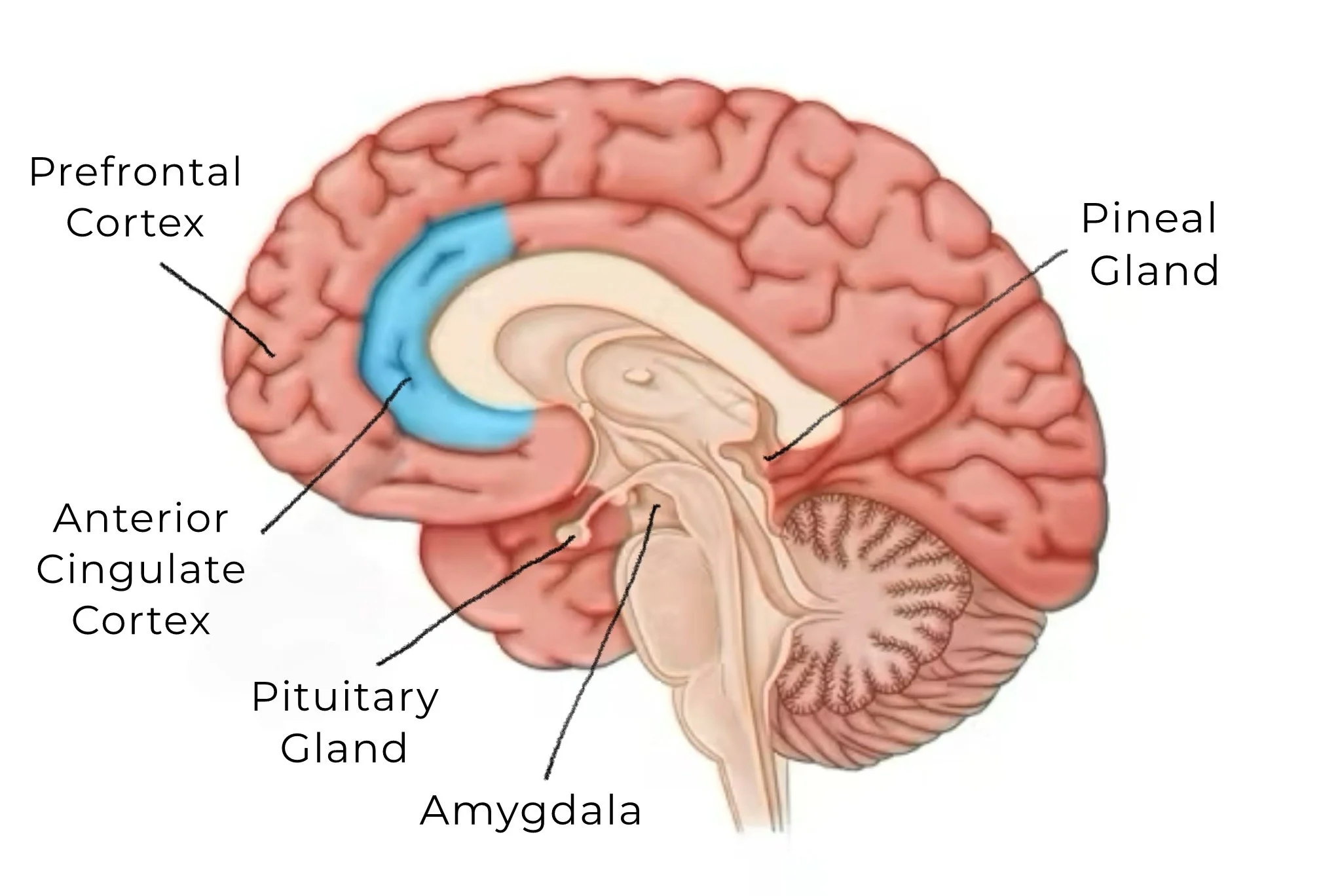YOUR SECRET WEAPON: PART 1
The first secret weapon available to you anytime is your breath. It is a powerful tool because it can help you self-regulate your physiological and emotional states, creating a foundation for overall well-being. Let me explain by first exploring what happens to your body and mind during various emotional states…
Emotional States and Their Physiological Impact
Happiness: Positive emotions like happiness are often linked to increased activity in the left prefrontal cortex, which is associated with well-being and resilience. Physiologically, happiness is reflected in a steady heart rate and a balanced autonomic nervous system, with a slight dominance of the parasympathetic nervous system. This creates a relaxed and harmonious state in the body.
Fear: Fear activates the amygdala, the brain's center for processing threats and anxiety. It triggers the "fight or flight" response, increasing heart rate and releasing stress hormones such as adrenaline and cortisol. This prepares the body to react but can also lead to heightened stress if prolonged.
Sadness: Sadness decreases activity in the left prefrontal cortex and increases activity in the right prefrontal cortex, which is linked to negative emotions and inhibition. Physiologically, sadness can lower heart rate variability, indicating reduced adaptability in the nervous system. Over time, this state can increase inflammation and contribute to chronic health issues.
Anger: Anger engages the amygdala and anterior cingulate cortex, both of which are involved in threat detection and stress responses. It elevates heart rate and blood pressure, which, if unchecked, can strain the cardiovascular system.
Anxiety: Anxiety combines heightened activity in the amygdala with overactivation of the prefrontal cortex, as the brain tries to assess and mitigate threats. It also engages the hypothalamus and pituitary glands, releasing cortisol and adrenaline. This leads to increased heart rate, altered heart rhythms, and imbalances in neurotransmitters like serotonin and GABA, all of which impact mood regulation.
Change your breath, change your state
Your breath serves as a direct line to your autonomic nervous system, offering a simple yet powerful way to manage the physiological changes caused by these emotional states. By consciously altering your breathing patterns, you can influence the balance of oxygen and carbon dioxide in your bloodstream, calm the stress response, and activate the parasympathetic nervous system. This, in turn, improves blood flow, heart rate variability, and overall emotional balance.
Scientific Evidence Supporting Breathwork
Studies have shown that controlled breathing can significantly reduce stress and anxiety. For example, research published in Frontiers in Human Neuroscience (2017) demonstrated that slow diaphragmatic breathing decreases cortisol levels and improves emotional regulation. Similarly, a study in The Journal of Alternative and Complementary Medicine (2018) found that specific breathing techniques activate the vagus nerve, enhancing parasympathetic activity and reducing symptoms of anxiety.
Practical Breathing Techniques
Here are some techniques to help you harness the power of your breath:
Diaphragmatic Breathing: Place one hand on your chest and the other on your abdomen. Breathe deeply through your nose, ensuring your diaphragm (and not your chest) rises and falls. Exhale slowly. This technique promotes relaxation and reduces stress.
Box Breathing: Inhale for a count of four, hold your breath for four, exhale for four, and pause for four. Repeat this cycle to create a sense of calm and focus.
Alternate Nostril Breathing (Nadi Shodhana): Close one nostril with your thumb and inhale deeply through the other. Switch nostrils and exhale. This practice balances the nervous system and fosters mental clarity.
Humming Breath: Inhale deeply and exhale while humming. The vibration stimulates the vagus nerve, enhancing relaxation and emotional balance.
Your breath is a free, always-available resource that holds incredible potential for self-regulation and emotional well-being. By developing awareness of your breathing patterns and practicing intentional breathwork, you can create profound shifts in your mental and physical states. When combined with the power of your voice, the possibilities for harmony and healing are endless.


